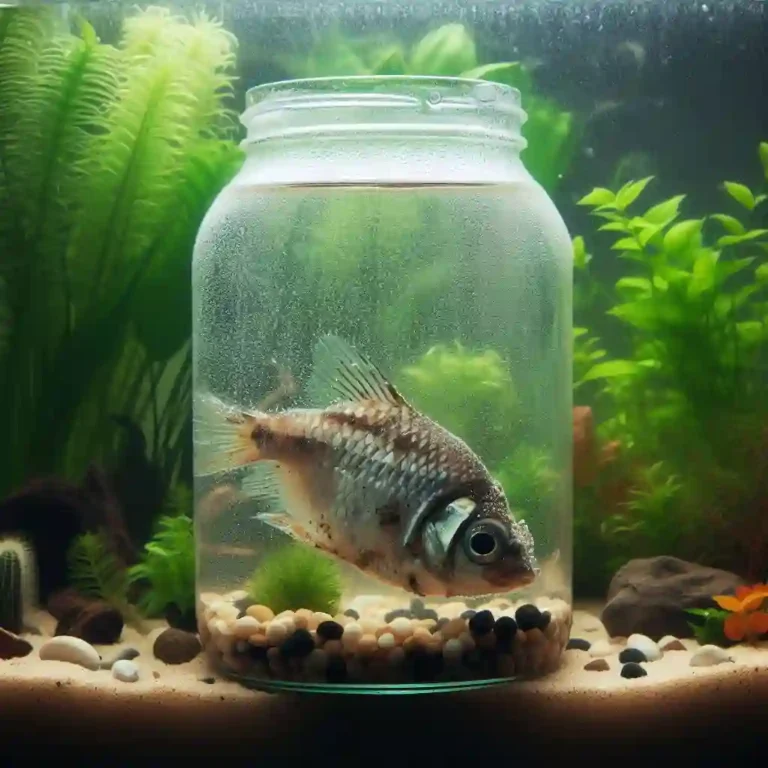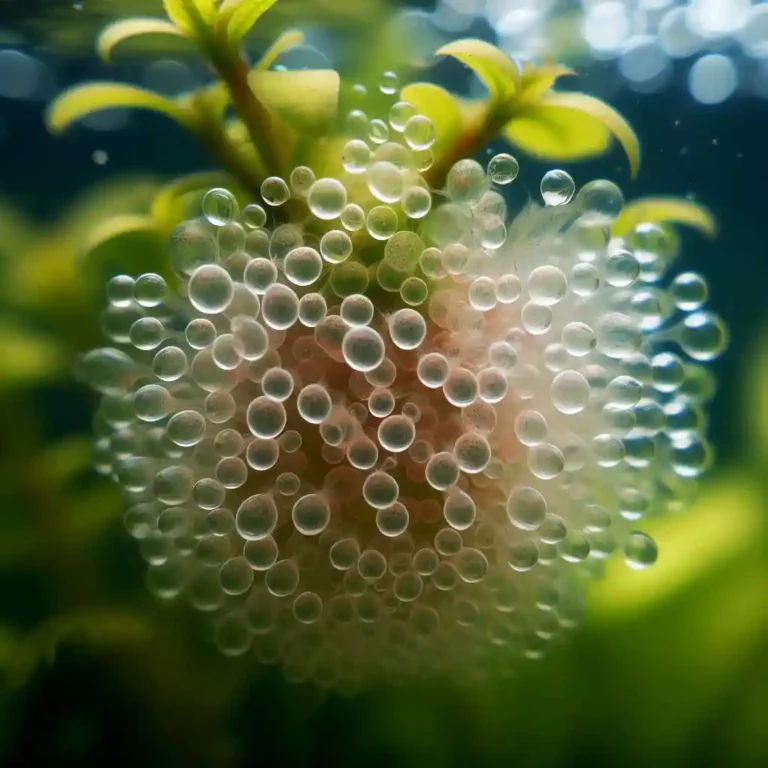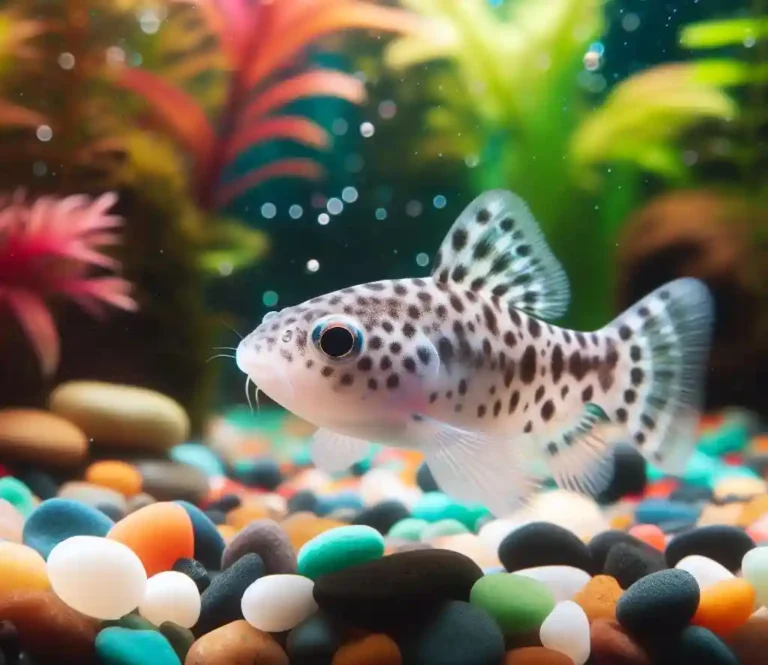Pregnant Molly Fish: A Guide to Pregnancy Nutrition and Wellness
Pregnant Molly: Are you wondering if your Molly fish is pregnant? Identifying the signs of pregnancy in Molly fish can be a challenge, but it’s crucial for providing the best possible care for your fish and ensuring a successful breeding experience.
In this guide, we’ll dive into the world of pregnancy nutrition and wellness for Molly fish, covering the essential nutrients, feeding tips, and habitat considerations to support a happy and healthy pregnancy.
Pregnant Molly Fish- A Quick Guide

| Topic | Description |
|---|---|
| Gestation Period | 3-4 weeks |
| Signs of Pregnancy | Swollen belly, darkening of the belly, changes in behavior (increased appetite or reduced activity) |
| Feeding | Balanced diet, high-quality commercial foods, live foods, and vegetables |
| Feeding Frequency | 2-3 times a day, small amounts to prevent overeating |
| Tankmates | Separate from other fish to prevent stress and predation |
| Water Parameters | Optimal water parameters, including temperature, pH, and water hardness |
| Care After Birth | Safe and comfortable environment, nutrient-rich diet, and monitoring for signs of illness or stress |
| Signs of Healthy Pregnancy | Swollen belly, darkening of the belly, and changes in behavior |
| Common Health Issues | Fungal infections, bacterial infections, and egg binding |
| Prevention | Maintain optimal water parameters, provide a balanced diet, and reduce stress |
Recognizing the Signs: How to Identify a Pregnant Molly Fish
Physical Changes
- Swollen Belly: A pregnant molly’s belly will become noticeably swollen and rounded, especially around the anal fin area. This is due to the developing eggs or fry (baby fish) inside her.
- Darkening of the Belly: The belly may darken in color, becoming more grayish or blackish, which is a sign of pregnancy.
- Enlarged Vent: The vent (the area around the anus) may become more prominent and swollen, indicating the presence of eggs or fry.
Behavioral Changes
- Increased Appetite: Pregnant mollies may exhibit increased hunger and eat more frequently to support the growth of their young.
- Reduced Activity: As the pregnancy advances, the molly may become less active, spending more time hiding or resting.
- Defensiveness: Pregnant mollies may become more aggressive or defensive, especially when approached or disturbed.
Other Signs
- Gravid Spot: A dark spot or patch may appear on the belly, near the anal fin, which is a sign of pregnancy.
- Fins and Scales: The fins and scales may become more vibrant or intense in color, which can be a sign of pregnancy.
Optimizing the Environment: Creating a Healthy Habitat for Your Pregnant Molly

Water Quality:
- Regular Water Changes: Perform regular water changes (25-50% every 1-2 weeks) to maintain excellent water quality and prevent the buildup of toxins.
- Monitor Water Parameters: Regularly test the water for ammonia, nitrite, and nitrate levels. Maintain a pH range of 7.5-8.5, temperature between 72°F-82°F (22°C-28°C), and water hardness around 10-20 dGH.
Diet and Nutrition:
- Nutrient-Rich Foods: Provide a varied diet rich in nutrients, such as high-quality commercial flake or pellet food, supplemented with live or frozen foods like brine shrimp, bloodworms, or vegetables like zucchini or spinach.
- Increased Feeding: Pregnant mollies may require more frequent feeding to support the growth of their young. Offer 2-3 meals a day, but avoid overfeeding, which can lead to water quality issues.
Tank Conditions:
- Spacious Tank: Ensure your tank is large enough to accommodate your pregnant molly comfortably. A minimum tank size of 10 gallons is recommended.
- Plenty of Hiding Places: Provide plenty of plants, rocks, and decorations to create hiding places and reduce stress.
- Stable Water Flow: Maintain a moderate water flow to simulate natural currents and prevent stagnant water.
Tankmates and Safety:
- Separate the Mother: Move the pregnant molly to a separate breeding tank or a safe, predator-free environment to prevent predation and ensure the survival of the newborns.
- Avoid Aggressive Tankmates: Remove any aggressive or fin-nipping tankmates that may harass or stress the pregnant molly.
- Cover the Tank: Consider covering the tank to prevent jumping and reduce stress.
Nutrition for a Healthy Pregnancy: The Best Foods for Your Pregnant Molly
High-Quality Commercial Foods:
- Flake Food: Look for high-quality flake foods specifically formulated for livebearers like mollies. These foods are rich in protein, vitamins, and minerals.
- Pellet Food: Pellet foods are another excellent option, providing a concentrated source of nutrients.
Live and Frozen Foods:
- Brine Shrimp: Rich in protein and omega-3 fatty acids, brine shrimp are an excellent live food for pregnant mollies.
- Bloodworms: These are another nutritious live food option, high in protein and iron.
- Daphnia: A small, freshwater crustacean, daphnia is a nutritious live food for mollies.
- Frozen Foods: Frozen brine shrimp, bloodworms, and krill are convenient and nutritious options.
Vegetable-Based Foods:
- Spirulina: A nutrient-rich algae, spirulina is an excellent source of protein, vitamins, and minerals.
- Zucchini and Spinach: These vegetables are easily digestible and provide essential nutrients like fiber, vitamins, and minerals.
Supplements:
- Vitamin Supplements: Add a vitamin supplement specifically formulated for aquarium fish to ensure your pregnant molly receives all the necessary vitamins and minerals.
- Omega-3 Supplements: Omega-3 fatty acids are essential for fetal development and can be added to the diet through supplements or foods rich in omega-3s.
Feeding Tips:
- Variety is Key: Offer a varied diet to ensure your pregnant molly receives a broad range of nutrients.
- Feed Frequently: Pregnant mollies may require more frequent feeding to support the growth of their young.
- Avoid Overfeeding: Monitor your molly’s appetite and adjust feeding amounts to prevent overfeeding, which can lead to water quality issues.
Breeding Basics: Understanding the Mating Process and Pregnancy Cycle
Mating Process:
- Courtship: Males will perform a courtship dance to attract females, which involves swimming alongside the female, vibrating their bodies, and displaying their fins.
- Mating: The male will then mate with the female by swimming alongside her and releasing his sperm, which fertilizes the eggs in the female’s ovaries.
Pregnancy Cycle:
- Gestation Period: The gestation period for mollies is approximately 3-4 weeks, during which the female will develop eggs or fry (baby fish) inside her body.
- Egg Development: The eggs will develop and grow inside the female’s ovaries, receiving nutrients and oxygen from the mother’s bloodstream.
- Fry Development: After fertilization, the eggs will hatch into fry, which will continue to develop and grow inside the mother’s body.
- Birth: After the gestation period, the female will give birth to live young, which will emerge from her body.
Tips for a Stress-Free Pregnancy Of Molly Fish
Provide a Safe and Comfortable Environment:
- Spacious Tank: Ensure your tank is large enough to accommodate your pregnant molly comfortably. A minimum tank size of 10 gallons is recommended.
- Plenty of Hiding Places: Add plants, rocks, and decorations to create plenty of hiding places and reduce stress.
- Stable Water Parameters: Maintain stable water parameters, including temperature, pH, and water hardness, to reduce stress and promote a healthy environment.
Nutrition and Feeding:
- Balanced Diet: Provide a balanced and varied diet rich in nutrients to support the health and well-being of your pregnant molly.
- Avoid Overfeeding: Monitor your molly’s appetite and adjust feeding amounts to prevent overfeeding, which can lead to water quality issues.
Reduce Stress Triggers:
- Minimize Tank Maintenance: Avoid sudden changes or disturbances to the tank, such as rearranging decorations or performing maintenance during the pregnancy.
- Avoid Aggressive Tankmates: Remove any aggressive or fin-nipping tankmates that may harass or stress the pregnant molly.
- Cover the Tank: Consider covering the tank to reduce stress and prevent jumping.
Common Health Issues: Identifying and Treating Pregnancy-Related Problems
Here are some common pregnancy-related problems to watch out for:
1. Fungal Infections:
- Causes: Poor water quality, stress, and weakened immune system.
- Symptoms: Fungal growth on the body, fins, or eggs.
- Treatment: Improve water quality, increase water changes, and add antifungal medications.
2. Bacterial Infections:
- Causes: Poor water quality, stress, and weakened immune system.
- Symptoms: Lethargy, loss of appetite, and visible signs of infection (e.g., redness, swelling).
- Treatment: Improve water quality, increase water changes, and add antibacterial medications.
3. Egg Binding:
- Causes: Poor water quality, stress, and genetic predisposition.
- Symptoms: Difficulty laying eggs, swollen abdomen, and lethargy.
- Treatment: Improve water quality, increase water changes, and consider adding a water conditioner to reduce stress.
4. Dropsy:
- Causes: Bacterial infection, poor water quality, and stress.
- Symptoms: Swollen abdomen, lethargy, and labored breathing.
- Treatment: Improve water quality, increase water changes, and add antibacterial medications.
5. Pregnancy-Related Complications:
- Causes: Poor nutrition, stress, and genetic predisposition.
- Symptoms: Difficulty giving birth, stillbirths, or deformed fry.
- Treatment: Ensure a balanced diet, reduce stress, and provide a safe and comfortable environment.
The Birth Process: What to Expect and How to Care for Newborn Fry
The Birth Process:
- Signs of Impending Birth: The mother molly will often exhibit signs of restlessness, such as rapid breathing, erratic swimming, or hiding in plants.
- Birth: The mother will give birth to live young, which will emerge from her body. This process can take several hours, and the mother may give birth to multiple batches of fry.
- Fry Development: The newborn fry will be tiny, transparent, and vulnerable. They will absorb the yolk sac and begin to swim and feed within a few days.
Caring for Newborn Fry:
- Separate the Fry: Immediately separate the fry from the mother and other fish to prevent predation and ensure their survival.
- Provide a Safe Environment: Set up a separate breeding tank or a safe, predator-free environment with plenty of hiding places and plants.
- Nutrition: Feed the fry infusoria or a commercial fry food, such as newly hatched brine shrimp or powdered fry food.
- Water Quality: Maintain excellent water quality by performing regular water changes (25-50% every 1-2 weeks) and monitoring water parameters.
- Monitor Growth: Observe the fry’s growth, development, and behavior, and adjust their diet and environment accordingly.
Tips for Successful Fry Rearing:
- Maintain Optimal Water Parameters: Ensure stable water temperature (72°F-82°F), pH (7.5-8.5), and water hardness (10-20 dGH).
- Provide Adequate Food: Feed the fry frequently (3-5 times a day) and adjust the amount based on their growth and appetite.
- Monitor for Disease: Regularly inspect the fry for signs of disease or stress, and take corrective action if necessary.
- Gradually Introduce New Foods: As the fry grow, introduce new foods, such as small invertebrates or commercial pellets, to ensure a balanced diet.
Breeding for Success: Tips for Selective Breeding and Line-Breeding
Selective Breeding:
- Choose Healthy Parents: Select breeding stock with desirable traits, such as vibrant colors, robust health, and strong fins.
- Identify Desired Traits: Determine the specific characteristics you want to emphasize or improve in your breeding program.
- Pair Compatible Fish: Match fish with complementary traits to create offspring with the desired characteristics.
- Monitor and Select: Observe the offspring and select those that exhibit the desired traits, while culling those that don’t meet your standards.
Line-Breeding:
- Establish a Foundation: Start with a small group of high-quality fish with the desired traits.
- Inbreeding: Breed siblings or close relatives to concentrate the desired traits and reduce genetic variation.
- Line-Breeding: Continue breeding within the established line, selecting for the desired traits and culling those that don’t meet your standards.
- Outbreeding: Occasionally introduce new genetic material from outside the line to maintain genetic diversity and prevent inbreeding depression.
Post-Pregnancy Care: How to Help Your Molly Fish Recover and Thrive
Provide a Safe and Comfortable Environment:
- Separate the Mother: Move the mother to a separate tank or a safe, predator-free environment to prevent stress and predation.
- Optimal Water Conditions: Maintain optimal water parameters, including temperature, pH, and water hardness, to promote healing and recovery.
- Plenty of Hiding Places: Add plants, rocks, and decorations to create plenty of hiding places and reduce stress.
Nutrition and Feeding:
- Nutrient-Rich Diet: Provide a nutrient-rich diet, including high-quality commercial foods, live foods, and vegetables, to support recovery and health.
- Frequent Feeding: Feed your molly frequently, but in small amounts, to prevent overeating and promote digestion.
- Avoid Overfeeding: Monitor your molly’s appetite and adjust feeding amounts to prevent overfeeding, which can lead to water quality issues.
FAQs
Q: How long is a molly fish pregnant?
A: The gestation period for molly fish is approximately 3-4 weeks.
Q: How can I tell if my molly fish is pregnant?
A: Look for signs such as a swollen belly, darkening of the belly, and changes in behavior like increased appetite or reduced activity.
Q: What should I feed my pregnant molly fish?
A: Provide a balanced diet rich in nutrients, including high-quality commercial foods, live foods, and vegetables.
Q: How often should I feed my pregnant molly fish?
A: Feed your pregnant molly fish 2-3 times a day, but in small amounts to prevent overeating.
Q: Can I keep my pregnant molly fish with other fish?
A: It’s recommended to separate your pregnant molly fish from other fish to prevent stress and predation.
Q: How can I ensure a healthy pregnancy for my molly fish?
A: Maintain optimal water parameters, provide a balanced diet, and reduce stress by minimizing changes to the tank.
Q: What are the signs of a healthy pregnancy in molly fish?
A: Look for signs like a swollen belly, darkening of the belly, and changes in behavior like increased appetite or reduced activity.
Q: How can I care for my molly fish after giving birth?
A: Provide a safe and comfortable environment, maintain optimal water parameters, and offer a nutrient-rich diet to support recovery and health.

Hello, I’m Aria Cooper, the heart and soul behind Swimmy Buddies. As a devoted fish aficionado, I share my aquatic adventures and expertise to inspire your own underwater explorations. 🐠🌊







